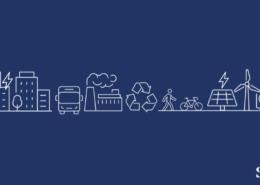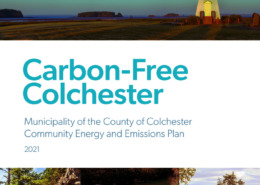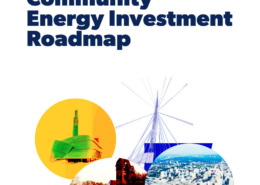 https://www.ssg.coop/wp-content/uploads/2024/04/How-to-Use-the-Greenhouse-Gas-Calculator-for-Municipalities-1.jpg
540
960
Emi Do
https://www.ssg.coop/wp-content/uploads/2015/01/ssg_logo-e1677266550975.png
Emi Do2024-04-10 16:04:522024-04-10 16:37:16How to use the Greenhouse Gas Calculator for Municipal Projects
https://www.ssg.coop/wp-content/uploads/2024/04/How-to-Use-the-Greenhouse-Gas-Calculator-for-Municipalities-1.jpg
540
960
Emi Do
https://www.ssg.coop/wp-content/uploads/2015/01/ssg_logo-e1677266550975.png
Emi Do2024-04-10 16:04:522024-04-10 16:37:16How to use the Greenhouse Gas Calculator for Municipal ProjectsOur tools are open source and part of the Creative Commons.
Get in touch if you would like our support in applying these tools.
Revolving Loan Fund
Date Launched: 2019
The revolving loan fund is a municipally-hosted finances pool that supports the funding of low-carbon actions in the community and/or by the municipality. The projects and programs funded typically achieve cost savings, some of which are reinvested into the fund for use in financing additional projects. A revolving loan fund can reduce the capital required for decarbonisation by a factor of three or more.
Plan4DE
Date Launched: 2016
Plan4DE is a cutting-edge tool for planners, modellers, and decision-makers to determine where district energy systems can be integrated into existing or future neighbourhoods. The tool allows municipal planners to understand how factors such as density and the diversity of building types affects the viability of district energy. SSG worked with international partners to develop the model for the International Energy Agency.
Learn more about Plan4DE here.
Carbon Accounting Framework
Date Launched: 2020
Carbon accounting frameworks are a cutting-edge approach for local governments to track progress on climate action and stay on top of their emissions reductions goals. A carbon accounting framework is an accounting system that supports carbon budgeting in municipalities at the corporate or community level. The tool enables project staff to track GHG emissions from individual projects and aggregate the impacts of multiple projects into a central accounting system, preventing double counting.
Neighbourhood Energy and Emissions Model (NEEM)
Date Launched: 2020
NEEM is a spatial energy systems model that can evaluate the impact of neighbourhood design and form (e.g., land use, buildings, etc) on energy demands and emissions production. It can calculate the costs from buildings, transportation, and energy generation. NEEM can be used to inform neighbourhood plans, secondary plans, and major developments and can report on energy and emissions on an annual to hourly basis.
CanESS
Date Launched:
A Canadian version of ESS, the Canadian Energy Systems Simulator (CanESS) model enables bottom-up accounting for energy supply and demand across Canada, which can be disaggregated by fuel, sector, and region (e.g., province or territory).
The model draws on data related to energy sources (e.g., coal, oil, gas, renewables), energy use (e.g., vehicles, appliances, buildings), and energy flows (e.g., hydrogen systems, district energy systems). CanESS is calibrated with historical data from 1978 to the present, and enables scenario projection to 2050 and beyond.
Energy Systems Simulator
Date Launched: 2020
From infrastructure investments to utility policies, the Energy Systems Simulator (ESS) model helps states, provinces, and countries identify how to reduce greenhouse gas emissions, as well as the financial costs and benefits climate action will provide. The model can report on energy and emissions from an hourly to annual basis.
ESS analyzes energy supply and demand in order to project energy use and emissions over time, as well as to assess potential policies and investments in terms of their emissions and financial impacts. The model incorporates data on renewable resources, conventional fuels, energy consumption, and all intermediate energy flows, such as hydrogen or district energy systems. It can also track emissions and assess actions for sequestration in forests, agriculture, wetlands, and the ocean.
Municipal Energy and Emissions Database (MEED)
Date Launched: 2021
MEED is a revolutionary open-access online database that offers every Canadian community the data it needs to begin acting on climate change. Every one of Canada’s 4,000+ cities, towns, and villages can access their own community carbon-pollution profile, revealing the sources and volume of local greenhouse gas emissions.
Three things make a MEED inventory different:
- It’s Free: MEED is free, and a local government can use it to report to the Global Covenant of Mayors, CDP, and/or the Federation of Canadian Municipalities’ Partners for Climate Protection program.
- It’s Credible: It uses a globally recognized standard—the Global Protocol for Community-Scale Greenhouse Gas Emission Inventories (GPC).
- It’s Transparent: A local government can compare its emissions with those of a similar sized community elsewhere, and do so knowing it is comparing apples to apples.
See your own community’s profile and learn more about MEED here.
CityInSight Adaptation
Date Launched: 2021
CityInSight Adaptation enables cities to make their community more resilient by analyzing the social and financial costs of climate hazards to inform the development of potential solutions and climate adaptation plans.
CityInSight Adaptation is one of the first integrated models for quantifying the financial risk of climate change for a community or organization. The model assesses current and future weather patterns, and related hazards such as flooding, heat waves, and droughts, and calculates the impact on current and future infrastructure, the natural environment, and the community. Damages are represented in dollar amounts or through non-monetary metrics, such as number of people displaced, increased mortality, and days of lost business production. The model also calculates avoided costs resulting from adaptive actions, enabling assessment of the return on investment.
CityInSight Corporate
Date Launched: 2019
CityInSight Corporate helps organizations decarbonize their operations by identifying optimal and cost-effective strategies for reducing greenhouse gas emissions across real estate portfolios, corporate fleets, and waste and wastewater systems. The insights can be integrated into existing asset management systems and be used for reporting to the Task Force on Climate-Related Financial Disclosures.
Using bottom-up accounting to track energy supply, demand, and costs, the model helps organizations find concrete solutions to critical questions, such as whether to install solar panels, or how much energy and money could be saved by deep energy efficiency retrofits. The result: a comprehensive 10 to 20-year pathway that enables decision makers to invest in climate action and save money in the long term.
Learn more here.
CityInSight Community
Date Launched: 2015
How will land-use, transportation, and infrastructure investments shape your community five, 10, and 50 years into the future? From bike lanes to building codes, CityInSight Community helps municipal governments understand the implications of decisions today for greenhouse gas emissions, finances, and community well-being for decades to come.
In a class of its own, CityInSight is an integrated, multi-fuel, multi-sector, and spatial model for energy systems, emissions, and finances. Launched at the COP21 Climate Change Negotiations in Paris in 2015, CityInSight provides a variety of outputs that inform land-use decisions, transportation policy, energy infrastructure, building codes, waste management, environmental conservation, and agricultural approaches. We have used the model to develop climate action plans for over XX communities.








